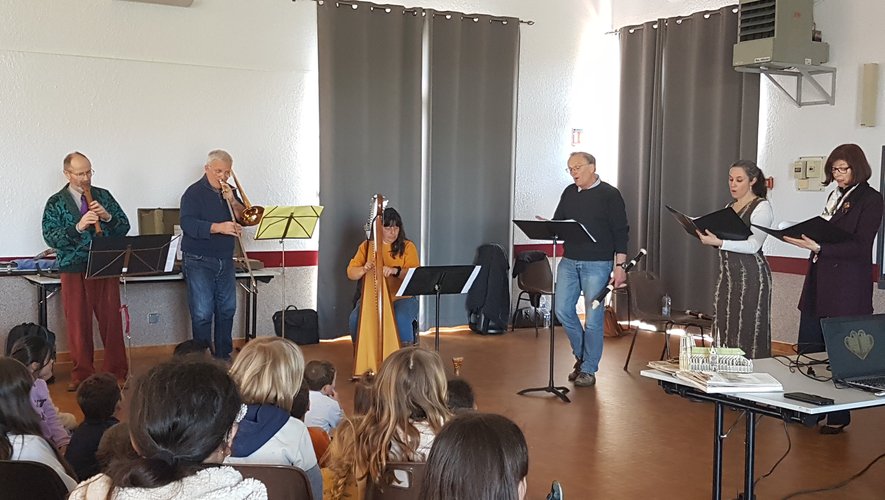A recreational day for the 48 children of the RPI Castagnède – Saleich – Labastide-du-Salat like that of last Tuesday with a morning dedicated to educational and fun workshops and a musical afternoon with the Arboscello of the Jardin des Musiques, in the municipality of Saleich .
On the programme: “Music in the age of the cathedrals”. “The era that managed to build grandiose buildings that are still present today is also the era that created the music we still use today,” explains musical director Jean-Yves Guerry. “This fundamental evolution has made possible the evolution of learned Western polyphony. It will make singing possible for both worship and entertainment.”
For young spectators, of course, a discovery, music and instruments. “What language do you sing in?”, one of the children will ask very sensibly. This is Latin, the Latin that has been sung in churches during worship services since the Middle Ages.
“In the beginning, during the masses, it was sung music and gradually we added voices and then instruments. We built in an elaborate way and so polyphony was born, starting with a first voice, then a second, a third, etc. .. to arrive at the time of the Renaissance with about forty different voices.
Initially ropes
As for the first instruments that entered the churches, what were they initially? “It was more the strings. Because of the ties with antiquity, the clergy did not really like the brass, which referred to the warlike, bestial aspect of the sounds. There were the ‘bouquin’ cornets made with animal horn; for the Most stringed instruments made from animal intestines were used, but also reeds, wood, animal skins for percussion… Human invention had its origins in nature.”
The main themes of this period were battles, seasons, knights, courtly poetry, celebration and dance. Musical writing with Gregorian chant begins with Charlemagne. Note-writing, as we know it today, was introduced at the Paris School of Notre-Dame in the middle ages.
As part of its educational activities, the Jardin de Musiques offers musical entertainment sessions. They are aimed at all target groups, but especially at schools and also those of EPHADs. For children, the service is available during school and after-school hours, but also in the context of leisure centers. As for Arboscello, we can find it, like every summer, randomly in the programming of municipalities and associations in Comminges.

